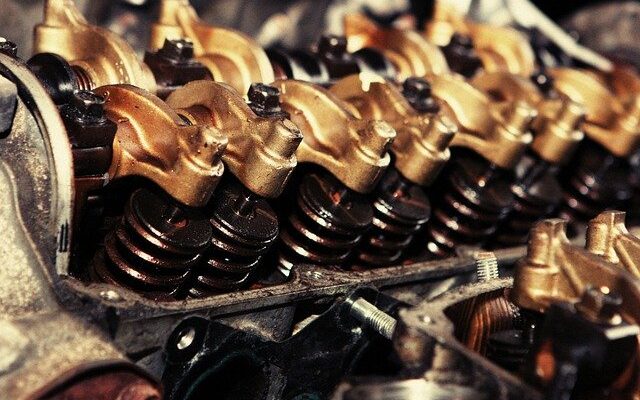There are three kinds of regeneration that are Active, Recovery, or Forced. You need to be familiar with the differences between the three kinds of regeneration that are available for diesel engines. Then, choose the appropriate one for your vehicle. Regeneration is crucial to the engine’s performance and can save you money on fuel. Read on to find out more about each of them.
Regeneration Active
Active regeneration is a method in which the exhaust system of diesel engines is cleansed of soot. Depending on the engine’s duty cycle, the amount of soot that has built up over time, the regeneration process could occur multiple times per day. It could take up to half an hour. The regeneration process could be stopped if the vehicle has been stopped for a prolonged period of time. Marine engine spares regeneration
Active regeneration is the process of raising the temperature of exhaust gas to promote the oxidation of soot in the exhaust. To increase the temperature of the exhaust gas, the process uses fuel combustion energy from the engine. This heat is then transferred to the exhaust stream which is then used to burn the soot from the DPF. Active regeneration is not yet available on all diesel engines.
If the regeneration process is interrupted The warning lamp will illuminate. This is an indicator of a HIGH EXHAUST TIMEPERATURE. Once the engine temperature returns back to normal the regeneration process will cease. Operators must make sure there is enough fuel to allow the engine to properly regenerate. The operator must also adhere to the guidelines in the InfoCenter so that regeneration can begin immediately. If regeneration is enabled, the vehicle should be at idle and the coolant temperature should be at or below 140degF.
Passive regeneration is automated, whereas active regeneration is initiated by the operator. Passive regeneration happens naturally and requires that the engine be operating. Passive regeneration happens when the exhaust temperature for the diesel engine reaches 350° Celsius. This is equivalent to 662° Fahrenheit. Sometimes, the exhaust temperature is too low to start regeneration. This could cause problems.
Recovery regen
The active regeneration technique is a procedure through which the engine ECU alters certain parameters and then raises the temperature of the exhaust. The catalyst reacts with the additional fuel and then burns the soot from the DPF. This is also known as parker regeneration. However, it shouldn’t be used in situations that could be dangerous such as in areas where there are low-hanging branches or combustibles.
The frequency of regeneration varies on many factors including the type of engine used and the load requirements. If the vehicle is designed for lighter loads, it might not be required to run the regeneration cycle on a regular basis. This case, it may be necessary to purchase an engine load bank. This could double the engine’s cost. Another important factor is the involvement of the owner in the process of regeneration. The process can last between 20 to 60 minutes, and it can consume up to half of a gallon fuel. A whistling sound may be heard during regeneration. This is normal.
Marine diesel engine spares regeneration services are becoming increasingly popular as a substitute for parts exchange. The marine environment can be extremely harsh on engine parts and a failure of one or more of them could affect the security of the vessel. Therefore, a team of skilled marine engineers and mechanics should be hired to perform the procedure.
Forced regen
Forced regeneration is a common practice in truck maintenance. While it is essential to address an issue and take the vehicle to a service center however, it is crucial that fleets are aware of how to make these processes as efficient and effective as possible. Here are some tips to consider when you are forced to renew a diesel engine.
For the first time forced regenerations are long and time-consuming, taking between 30 and 60 minutes. The engine is also rendered inoperable because of the heat generated by forced regens. This can lead to lost hours due to the unplanned downtime and the high cost of labor. It can also impact the delivery times of fleets.
If your engine stops running after forcing regeneration, it’s most likely that the DPF is faulty. If this is the situation, replacing or cleaning the DPF could be required. Other situations could indicate a problem in another aspect of the aftertreatment process. For these cases forced regen may not be the most appropriate option.
Regeneration by force can solve many common problems for example, a DPF filter that is too full or not working properly. A blocked DPF can lead to the vehicle being unusable or in an inability to drive. If the DPF isn’t functioning properly, it can be cleaned and replaced so that your diesel engine runs smoothly.



